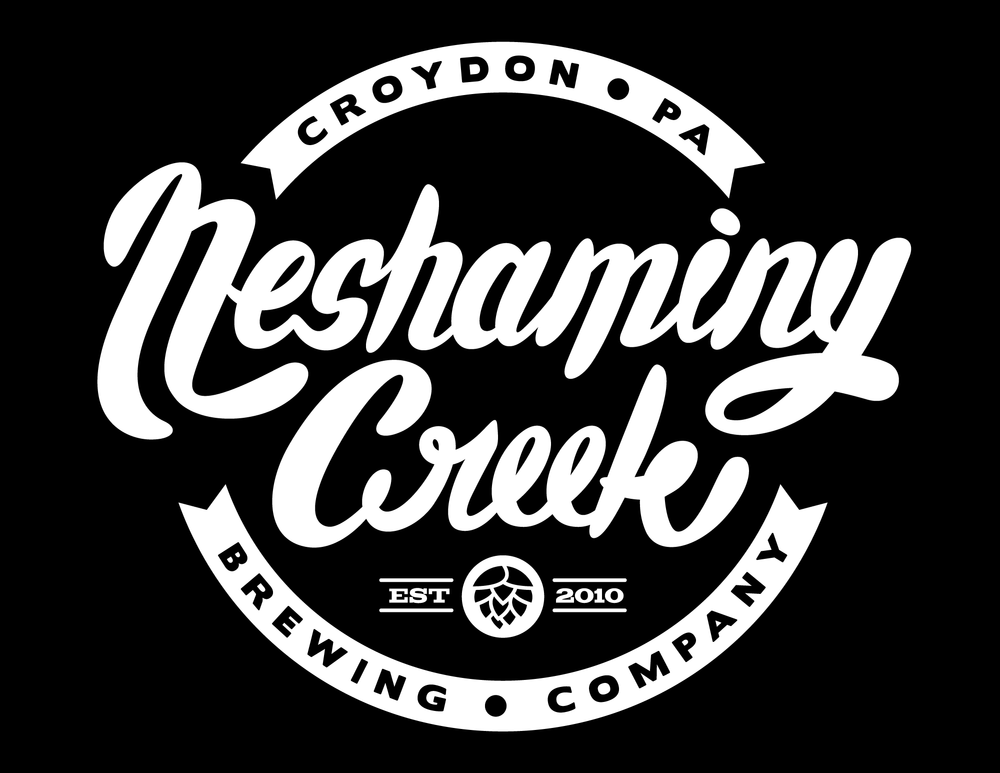Neshaminy Creek Brewing Co.

Dear Replicator,
One of my favorite beers is Croydon is Burning from Neshaminy Creek Brewing in Croydon, Pennsylvania. It is a fantastic Bamberg-style smoked lager that I think the readers of the Replicator would enjoy. It’s not quite as assertive as some traditional rauchbiers but has plenty of smoke character and complexity that starts in the aroma and continues through the finish. Would love to get their recipe!
John Putnam
Exton, Pennsylvania
It’s not every day that I receive requests for lagers let alone a smoked one. But the fact is that all beers used to be smoky to some degree, owing their smokiness to the fires that were used for drying malt.
Although Neshaminy Creek Brewing Company (NCBC) doesn’t smoke their own malt, they have nonetheless produced top-notch beers across a range of styles on their 22,000-BBL-per-year system located in Croydon, Pennsylvania. Founded in November of 2010, they didn’t start production brewing until nearly two years later in 2012, under the leadership/brewership of Jeremy Myers alongside buddies Rob Jahn and Steve Capelli. As Jeremy would tell you, just brew good beer. Cut the crap, the gimmicks, and just execute — and never stop learning. He routinely travels abroad for market research in order to improve the beers that NCBC produces; but he knows there’s always room for improvement.
NCBC also seems to be quite comfortable brewing across the gamut of beer styles: Whether it’s an intense double IPA like The Shape of Hops to Come, or an English barleywine called Concrete Pillow, or a simple Vienna lager called Churchville Lager, which won a gold at the 2013 Great American Beer Festival (GABF) and a bronze in 2016. They’re one of the few breweries in the Philadelphia region to have dedicated horizontal lager tanks, which based on the hardware they’ve garnered in the lager categories, has been a boon for them. In addition, they’ve got a barrel program with over 400 barrels alongside multiple foudres. Their 1.5-BBL pilot system allows the brewers to try new recipes or tweak a few favorites without running the risk of wasting a full batch of beer, as well as time and money, on mediocre product. But they aren’t shy when they’ve missed the mark. If a beer doesn’t live up to their expectations or is over-carbonated due to additional refermentation after packaging, they don’t hesitate to push the pause button. It’s a testament to the brand.
They also are quite active in their community, hosting nearly weekly events while their taproom is both children- and dog-friendly. Some of these events are charity movie nights that have benefited the local watershed partnership (Tookany/Tacony-Frankford Watershed). They also help out by brewing specialty charity beers. One such beer, Bee(r) School, was a wheat pale ale brewed with local orange blossom honey from Fruitwood Orchards and fermented using a Norwegian farmhouse yeast called Kveik. It was released during this past year’s Philly Beer Week with the proceeds being donated to the Kutztown-based Rodale Institute, which specializes in organic farming research. They also organize numerous social events to bring the local beer community together, events like Hot Rods & Hops, their yearly Oktoberfest, anniversary parties, as well as executing collaborative beers with other local breweries.
Croydon is Burning is a classic Bamberg-style smoked lager. So, your brewing emphasis should be placed on both the smoked malt character as well as the clean, lager fermentation. According to Jeremy, “One of the things that makes this beer unique is that you can’t be afraid to use A LOT of smoked malt. 85% is low, even by German standards. It doesn’t always have to be 100% smoked malt because you don’t want to lose some of the complexity that you can get with this beer from the use of other malts. But people tend to get scared using a lot of smoked malt. Don’t be shy, go big or go home.”
As for the lager portion, that’s a bit trickier. For Croydon is Burning, NCBC uses the Andechs Lager strain, which is available only as a commercial strain through Brewing Science Institute (BSI) in the United States. It attenuates well but won’t overly dry out a beer either, allowing for the malt to really shine through. The closest comparison available to the homebrew market through White Labs is WLP835, which is named German X Lager yeast. Depending on your own results, you might find that Wyeast 2206 (Bavarian Lager) or White Labs’ WLP830 (German Lager) may come close to hitting the mark.
Finally, if we’re talking about German lagers then inevitably the conversation will drift towards mashing protocols, specifically single infusion versus decoction. NCBC went the way of experimentation and tried out both. Their results? Both single infusion as well as decocted versions won GABF medals (Bronze in 2016 and 2017). So, they brewed it again using the single infusion mash protocol in 2018 and it supposedly was better than in 2016 and 2017 according to taste testers. What did they win in 2018? Nothing. Here’s to hoping that your attempts at crafting this authentic rauchbier are met with success. Prost!

Neshaminy Creek Brewing Company’s Croydon is Burning clone
(5 gallons/19 L, all-grain)
OG = 1.063 FG = 1.016
IBU = 21 SRM = 16 ABV = 6%
Ingredients
11 lbs. (5 kg) rauch malt
0.75 lb. (0.34 kg) light Munich malt
0.75 lb. (0.34 kg) Carapils® malt
0.5 lb. (0.23 kg) melanoidin malt
3.2 oz. (91 g) Carafa® III malt
4.5 AAU Herkules hops (60 min.)
(0.3 oz./8.5 g at 15% alpha acids)
3.4 AAU Tettnanger hops (10 min.) (0.75 oz./21 g at 4.5% alpha acids)
White Labs WLP835 (German X Lager) or Wyeast 2206 (Bavarian Lager) or White Labs WLP830 (German Lager) or SafLager W-34/70 yeast
¾ cup corn sugar (if priming)
Step by Step
Mill the grains, then mix with 4.1 gallons (15.6 L) of 166 °F (74 °C) strike water to achieve a single infusion rest temperature of 152 °F (67 °C). Hold at this temperature for 60 minutes. Mashout to 170 °F (77 °C). Vorlauf until your runnings are clear before directing them to your boil kettle. Batch or fly sparge the mash to obtain 6.5 gallons (24.6 L) of wort. Boil for 60 minutes, adding hops at the times indicated above left in the boil. At 15 minutes left in the boil, add a kettle fining agent of your choice.
After the boil, rapidly chill the wort to slightly below fermentation temperature, which is 52 °F (11 °C) for this beer. Pitch yeast and aerate well. Ferment cold for about 36 to 48 hours, ramping to 65 °F (18 °C) once the beer is about two thirds of the way through fermentation, about an SG of 1.034 (8.5 °Plato). Hold this temperature until terminal gravity is reached. Cold crash to 35 °F (2 °C) before transferring to lagering vessel for approximately one month. Bottle or keg the beer and carbonate to approximately 2.5 volumes.
Neshaminy Creek Brewing Company’s Croydon is Burning clone
(5 gallons/19 L, partial mash)
OG = 1.063 FG = 1.016
IBU = 21 SRM = 16 ABV = 6%
Ingredients
6 lbs. (2.7 kg) rauch malt
3 lbs. (1.36 kg) extra light dried malt extract
0.75 lb. (0.34 kg) Carapils® malt
0.5 lb. (0.23 kg) melanoidin malt
3.2 oz. (91 g) Carafa® III malt
4.5 AAU Herkules hops (60 min.)
(0.3 oz./8.5 g at 15% alpha acids)
3.4 AAU Tettnanger hops (10 min.) (0.75 oz./21 g at 4.5% alpha acids)
White Labs WLP835 (German X Lager) or Wyeast 2206 (Bavarian Lager) or White Labs WLP830 (German Lager) or SafLager W-34/70 yeast
¾ cup corn sugar (if priming)
Step by Step
Bring 2.3 gallons (8.8 L) of water to roughly 166 °F (74 °C). Steep the milled malts in a nylon bag for 45 minutes before removing and allowing the bag to drain. Add enough water to bring the total volume to 6.5 gallons (24.6 L) before adding the dried malt extract. Add extract while stirring. Once fully dissolved, heat wort to a boil. Boil for 60 minutes, adding hops at the indicated times left in the boil. At 15 minutes left in the boil, add a kettle fining agent of your choice.
After the boil, rapidly chill the wort to slightly below fermentation temperature, which is 52 °F (11 °C) for this beer. Pitch yeast and aerate well. Ferment cold for about 36 to 48 hours, ramping to 65 °F (18 °C) once the beer is about two thirds of the way through fermentation, about an SG of 1.034 (8.5 °Plato). Hold this temperature until terminal gravity is reached. Cold crash to 35 °F (2 °C) before transferring to lagering vessel for approximately one month. Bottle or keg the beer and carbonate to approximately 2.5 volumes.
Tips for Success:
Croydon is Burning uses traditional German malts including lots of rauch malt. Fear not extract brewers because you can easily perform a partial mash using a medium-sized nylon bag to harness the unique, complex character that comes from rauch malt. Currently, there’s no commercial extract versions of the malt and liquid smoke will give you only a shadow of the actual beer.
The second tip is to remember that rauchbiers are lagers; you can’t rush them. “Be patient, and let the yeast do the work,” as Jeremy mentioned to me. NCBC has been able to go from grain to glass in 42 days but there’s no rush. A strong, healthy pitch for a lager and the use of pure oxygen for aeration will go a long way to ensure a fermentation without faults.



